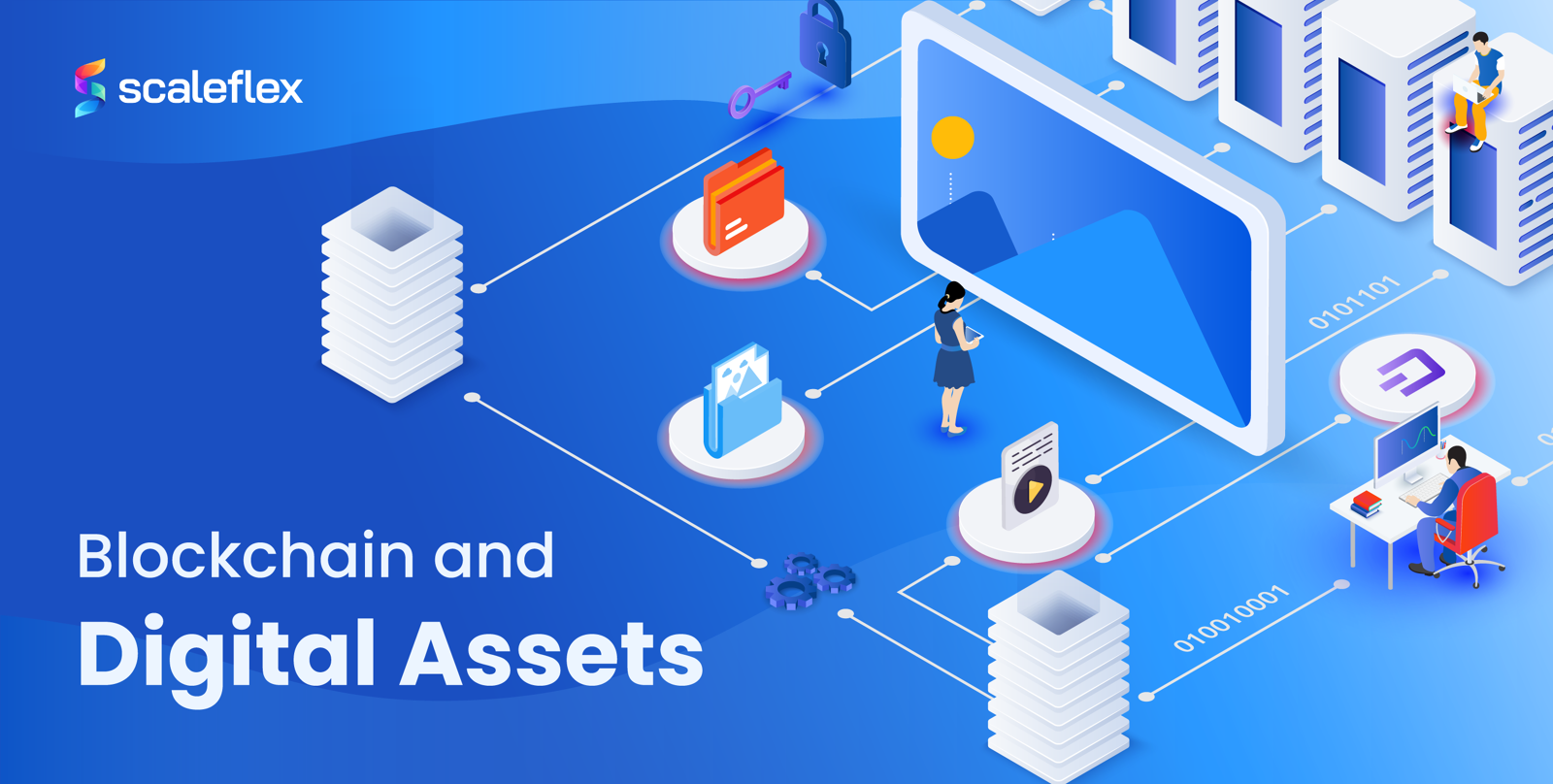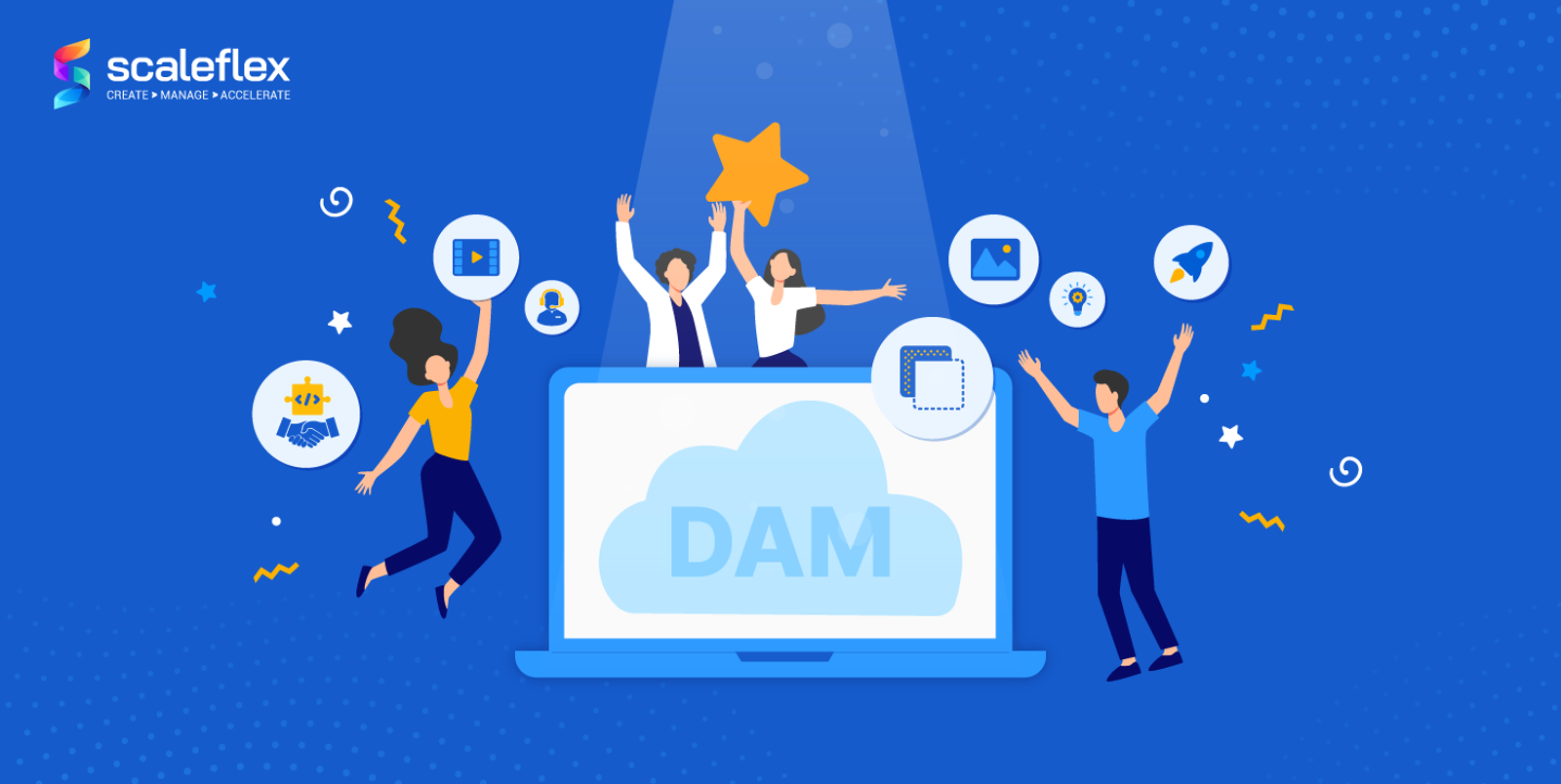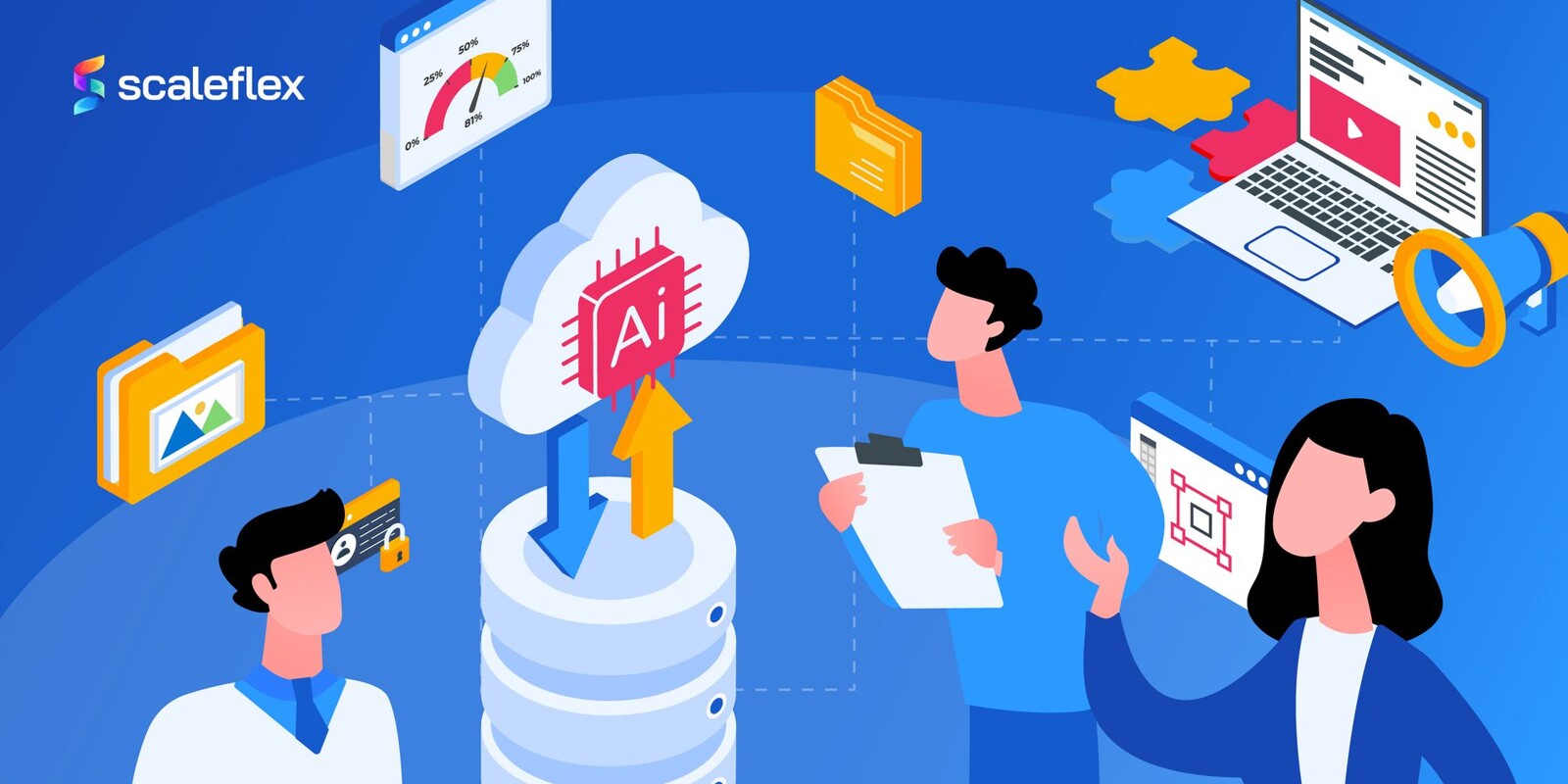What is Digital Asset Management?
Digital Asset Management (DAM) refers to how companies manage digital assets, like images, videos and PDFs, throughout their lifecycle: from their creation and upload to publishing and archival.
DAM platforms help you with this Digital Asset Management process. They store and centralize your company’s content and act as the go-to resource for your internal and external stakeholders. DAMs give you control over how you manage, publish and analyze this content - referred to as Content Operations - and help you automate the most repetitive parts of these processes.
DAMs can be considered central to your Content Operations strategy; many other systems can be powered by the content of your DAM, such as CMS, PIM, or Project Management Systems.
Table of Contents
All you need to know about DAM
This article provides a comprehensive overview of Digital Asset Management platforms (DAMs).
We explore what a DAM is, its history and evolution, the business benefits and challenges they solve, and provide an overview of the core functional elements found in modern DAM platforms.
Unsure if this article is relevant to you? If you fall into one of the below scenarios, we recommend reading about it!
- New to DAM: You have no direct experience with DAM but are curious to learn the ropes.
- DAM Knowledge Refresh: You are already familiar with DAM and its concepts but would like a refresher.
Digital Asset Management platforms (or also known as Digital Asset Manager) are here to help solve the challenges associated with managing today’s explosion of content - but, first up, what is meant by digital asset management exactly?
Let us start with an industry-standard definition of a DAM, as provided by Gartner:
“ A Digital Asset Management platform (DAM) stores, manages and renders rich media, including text, graphics, photos, video, and audio. A DAM can be sold as a software license or hosted service.
Typically, DAM systems are intended to support a wide range of actors — from specialized creative to generalist production to more operational and administrative roles — both inside and outside an organization, often including agencies and channel partners. ”
In the following sections we will explore Digital Asset Management further, looking at its history, the business benefits they can bring, the core stakeholders and use-cases and how they work.
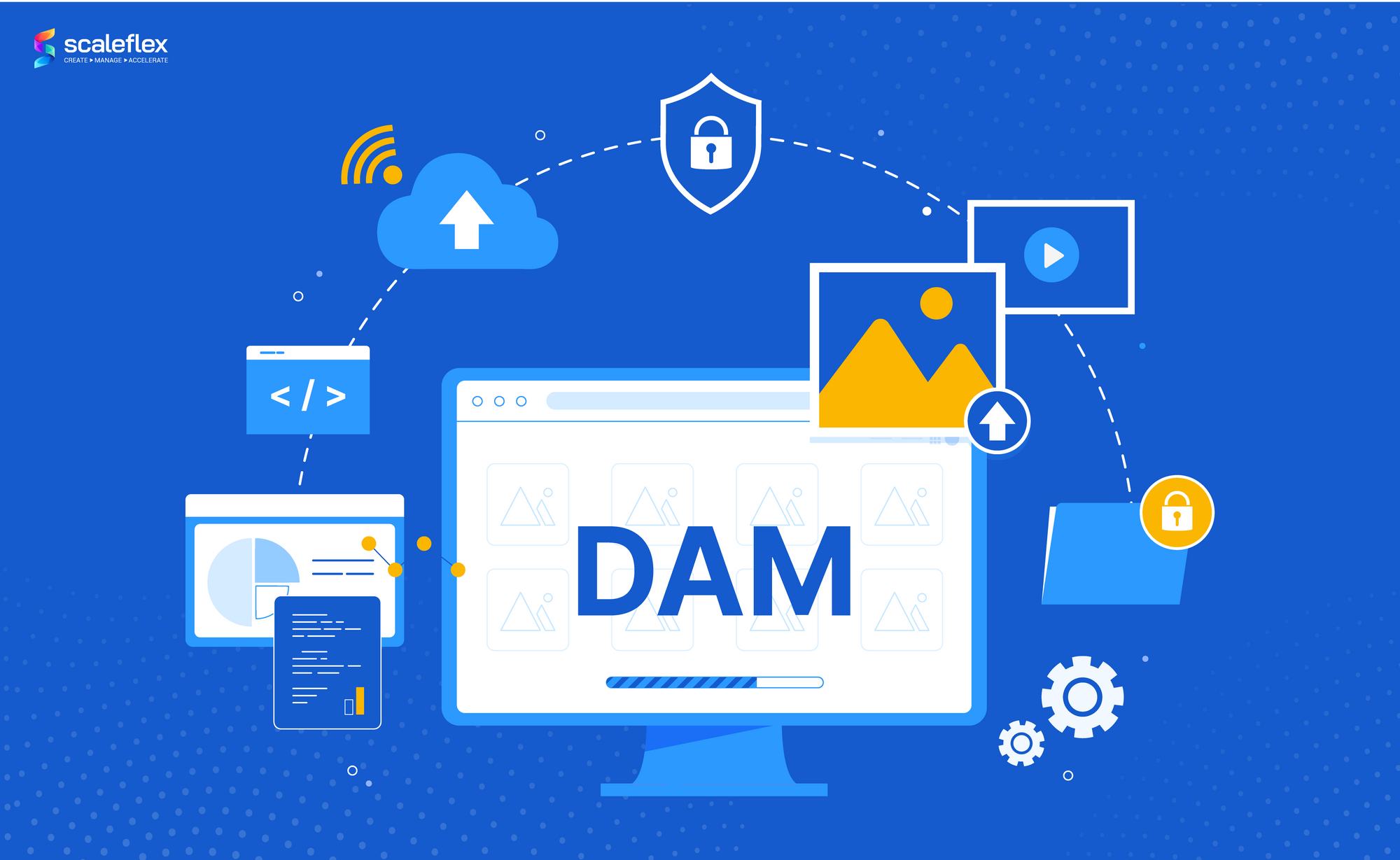
History of DAM and background challenges
The advent and development of Digital Asset Management go hand-in-hand with the growing importance of managing images, videos and other digital content in boosting business operations.
About 30 years ago, DAM first emerged as a specialized solution for media and publishing companies who needed a way to store and organize their videos and photos. At the time, these systems were mostly on-site and only met the most basic requirements of a Digital Asset Management system that we can see nowadays. In addition, the process of integrating DAM into a company system was still complicated, requiring a long onboarding time and customization effort.
Over the past 10 years or so, we have seen more and more challenges at different levels related to the management of digital content. First, we live in an era where an image is worth a thousand words. Therefore, to succeed in business, companies need to use various types of digital media content. Second, the creation of these assets is increasingly difficult to manage as it is used by many tools and channels throughout its lifecycle. Third, there are many different ways to work with these files, involving the interaction of both technical teams and non-technical teams. Moreover, in the context of globalization, successful global distribution is key for all businesses.
Digital Asset Management has evolved to keep pace with these emerging needs. Today, this technology has occupied an essential place in the MarTech ecosystem and companies of all sizes. In 2018, Gartner's marketing survey found that 79% of marketing departments have implemented or are in the process of implementing a Digital Asset Management solution.
Benefits of DAM (Why does a modern company need DAM?)
Digital Asset Management software solves a clear set of challenges that have arisen in recent years, in relation to the management and publishing of a company's digital assets, but looking outside of the features and functions of modern DAMs, what exactly are the business benefits they provide to the companies at which they are utilized?
The business benefits of DAM span three core use-cases:
1. Take Control of Your Content - without a DAM, content can run free. Expired copyrights, wrong versions, duplicates, incorrect branding - there is a myriad of ways in which your content can become a problem, as opposed to an asset. Utilizing a DAM ensures a level of control. You can ensure that copyrights are respected through metadata or Digital Rights Management (DRM) integration. Duplicates can be disregarded before they reach your storage, with detection at upload. And sharing your brand guidelines centrally in your DAM ensures everyone has the latest materials at their disposal and is on-brand.
2. Reduce Your Content’s Time to Market - Digital Asset Management platforms provide a centralized source of truth. This means that your teams know exactly where to go for the latest and current content, and then gives them a platform to collaborate on edits and set up approval processes quickly. Being able to locate and collaborate on content quickly, increases the speed at which you can bring content to market.
3. Speed Past Your Competitors - As the centralized source of truth for your assets, what better place to ensure their optimization? Optimizing your media, i.e. ensuring your images are served in WebP or AVIF, and that your videos are transcoded, means that your published content will be fast. That, in turn, means better SEO scores - Google likes light and fast content - and in the case of eCommerce, more conversion. Both of these factors give you an edge over your competitors.
That’s why Digital Asset Management is important for all businesses, regardless of their size, or industry.
Who uses Digital Asset Management? (User types)
Digital Asset Management software can touch a variety of roles in a company, however, these roles can be considered in two major categories: technical and non-technical. Let's see where digital asset management is used:
| Team | Use-case |
|---|---|
| Development, IT and Software Engineering Teams | Technical teams, spanning Development, IT and Software Engineering teams, often have varying levels of involvement with DAM - where this level of involvement is often dictated by the industry, company size or structure. From a light touch perspective, these technical teams can be responsible for ensuring the successful day-to-day operations of the DAM platform, and also its integration with other core systems within the MarTech Stack, such as PIM, or CMS systems. For some companies, technical teams are much more involved with the platform itself - often operating the Digital Asset Management headlessly (via API, or SDK) - where their role entails bulk upload, categorization, tagging and distribution of content. |
| Content, Design, and Marketing Teams | DAM has a huge role to play for non-technical teams. It is the central system for content that all other MarTech systems feed off.
For Marketing teams, DAM is involved at various stages of their campaigns, from project inception to collaborating with other team members, design teams, external parties, and eventually publishing and distributing content. For Content teams, DAM helps solve and prevent many headaches, by ensuring that all content enters and leaves one central location within a company. Ideally, approval processes and versioning are implemented, adding another layer of structure to the content creation and publishing process. Finally, Design teams no longer have to rely on multiple channels, email trails, or third-party systems, to align on content and changes. Digital Asset Management systems and its integration to the systems they use daily, such as Photoshop, means everything is in one place, and more time is spent designing, as opposed to the logistics and operations around it. |
How does Digital Asset Management work?
A DAM acts as a central repository and single source of truth for a company’s collection of content. It is integral to the content lifecycle, and plays a major supporting role in the following stages:
- Upload: Content can come from developers uploading via command line, marketers using an upload button, or external partners using your brand portal, regardless of how your content is uploaded; a DAM ensures your content is uploaded to the right location, is automatically categorized and optimized, and duplicates are avoided.
- Management: DAMs should provide you with customizable metadata and AI tagging options. When used in conjunction, you have a powerful tool at your disposal, to automatically tag large volumes of assets, and create categorization criteria that enable your business to stay organized and nimble.
- Collaboration: Throughout any campaign, or project using creative content; there will always be comments, changes, and revisions to be made. A Digital Asset Management platform simplifies this process by keeping approval processes within the platform, meaning that stakeholders do not need to involve other tools or platforms to share their feedback and suggestions with other parties. They are even able to work together remotely!
- Integrations: Although it is dependent on your company's industry and size, it is quite probable that your content will need to pass through multiple platforms, such as PIM or CMS platforms. Whilst some of these platforms offer storage options, none of them have the ability to play the central role for your content, this is where Digital Asset Management shines. DAMs remain the single source of truth for all teams and normally provide strong APIs and integration options for other platforms in the content lifecycle. Better still if it has a MACH Architecture, allowing you to integrate DAM in any technology environment.
- Delivery: In an ideal world, your DAM includes optimization and Content Delivery Network (CDN) integration, and ensures your content is delivered at maximum speed to end-users. This is extremely important for guaranteeing strong SEO, and in the case of eCommerce, maximizing conversion.
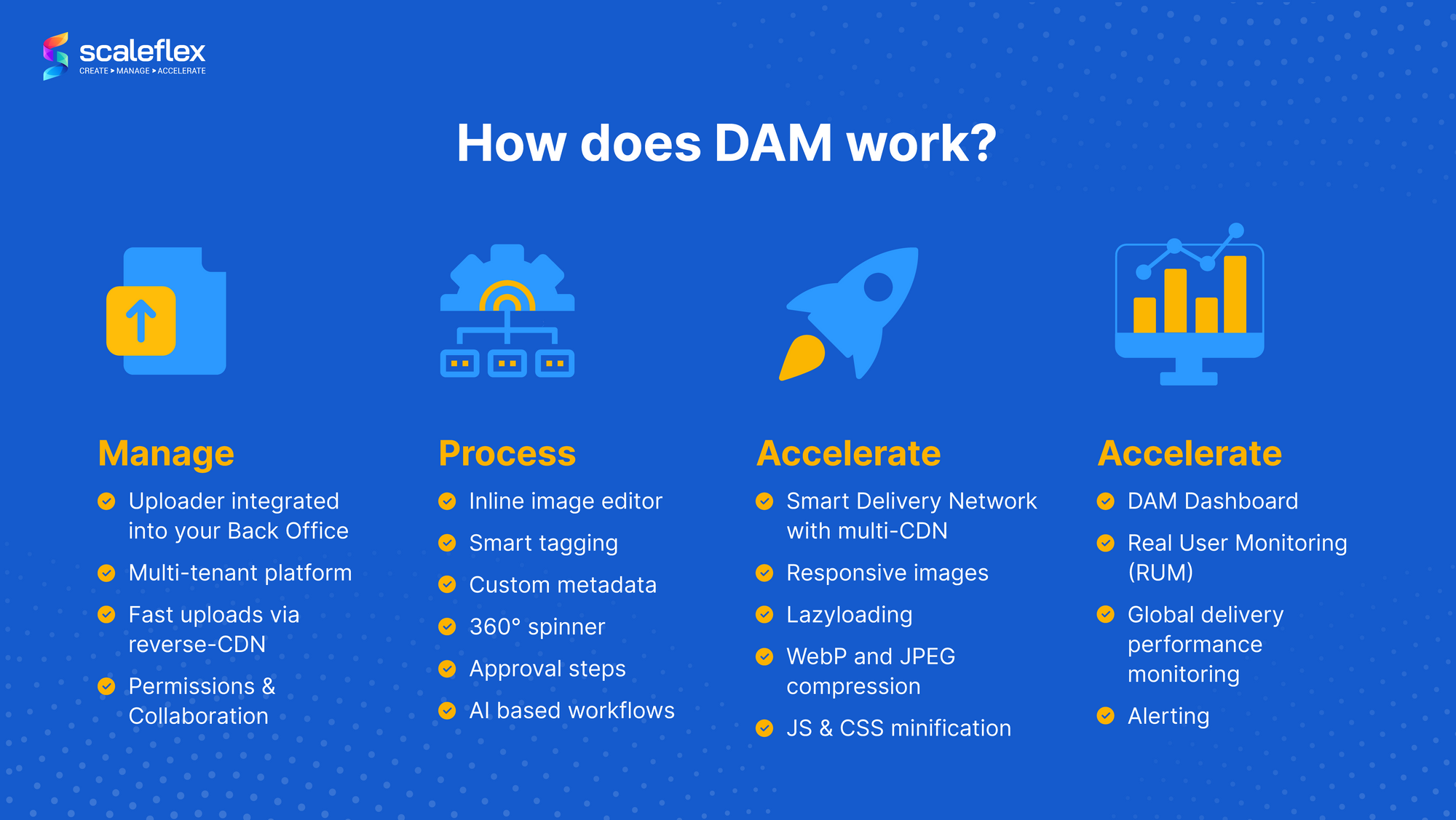
Case study
One company that recently implemented Digital Asset Management software was GoCar - a leading European automobile marketplace.
Before implementation, they considered building a tool in-house to address challenges they faced in relation to Content Operations. After some evaluation of their options and technical considerations, they opted that it would be best for their business to outsource these challenges and complexity to a DAM software provider.
Today, GoCar now has a modular Digital Asset Management solution, that helps them with customer photo uploads and edits via a DAM Widget, optimization of their media (increasing page speeds and SEO), and frees up internal development time to focus on more strategic and challenging business initiatives.
A key takeaway from this case study is the importance of utilizing modern DAM software that provides Headless and modular functionality - it allows you to build a system to your needs, as opposed to trying to make a less flexible system work for you. You can read the full case study here.
Conclusion
As discussed in this post, your DAM platform should act as the central source of truth for all of your company’s content, or “Digital Assets” as they are often referred to.
DAMs help you remain in control and help you as a digital content management tool. With AI categorization, custom metadata to fit your company products, and respecting content copyrights; DAMs help you gain the upper hand in the ever-expanding libraries of digital material at your company.
One of the core use-cases of Digital Asset Management is to help foster collaboration within your teams. Having one platform that teams can align on, to make suggestions on content edits and share materials (internally or externally) to stakeholders, greatly increases the ease and speed at which, often disparate, teams can collaborate.
Finally, as web speed and optimization become more critical to SEO and conversion; it is paramount that your DAM can automate this, ensuring that all content hosted on your DAM is optimized, to be light and fast (including video), and that this optimized content is delivered to your end users via a CDN.
DAMs have been around for a long time (roughly 30 years, or so!) - if you are a mature company that regularly works with content, the chances are you will have some sort of DAM platform (or process) in place already. However, the Digital Asset Management game has evolved. The platforms and processes from just a few years ago are now quickly becoming outdated or trying to play catch up.
Today, API integrations, collaboration capabilities, content optimization, and performance are top company priorities. These priorities require DAMs built for these challenges.
To end this article, we invite you to discover Filerobot - a collaborative and performant DAM, built to foster collaboration and help you gain control of your content. Designed for technical and non-technical teams. Click the link below to see a short video overview of Filerobot and how it can help you and your teams achieve more, together.
Learn more here: Filerobot DAM Introduction
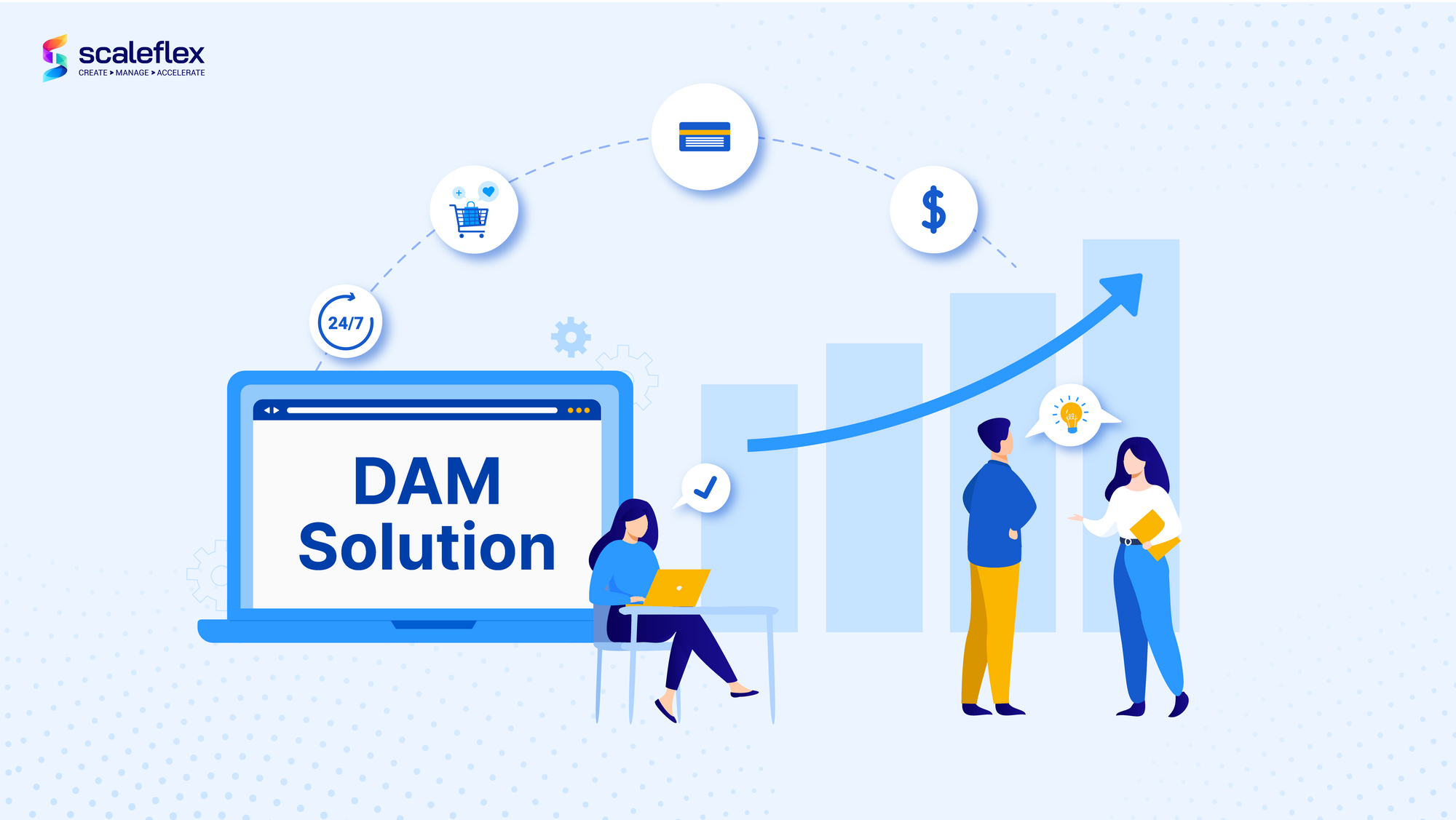
FAQs
What are examples of digital assets?
Digital assets, content, digital media... There is a multitude of terms used to describe what is essentially any type of digital material owned by a company. To be more specific, we can consider Digital Assets normally fall into one of the following categories: audio, images, graphics, PDFs, presentations, or videos.
What is a Headless DAM?
What is a Headless DAM?
A Headless DAM is a Digital Asset Management platform that has no ‘front-end’ (graphical user interface). It is operated by technical teams via Command Line Interface (CLI). Application Programming Interfaces (APIs) are utilized to connect the Headless DAM to other systems and software used by a company. Advanced DAM offerings offer comprehensive Headless access, alongside a Graphical User Interface.
Does my company need a DAM?
If your company works regularly with Digital Assets (images, videos, GIFs, PDFs, audio…) a DAM can provide instant business value, regardless of company size or industry, by centralizing your content and allowing your teams and stakeholders to build business processes around it. A DAM will help you take control and gain maximum value from your Digital Assets.
Is a DAM for technical or non-technical teams?
DAM is utilized by both technical and non-technical teams. The level of involvement depends on the use case and business requirements. Technical teams are usually responsible for the operation of Headless DAM deployments, as these are operated via an SDK and normally involve the implementation of APIs to connect with other software. More traditional DAMs, that are operated via a front-end interface, are utilized mostly by non-technical teams as a central resource to collaborate.
Which teams and departments use DAM?
As discussed in an FAQ above, DAM platforms can be operated and maintained by technical and non-technical teams. Depending on the company size, industry, and type of DAM, the specific teams and departments will vary. However, there are a few teams that will commonly interact with a DAM including Development, Content, Design, Digital, eCommerce, Product, and Marketing.
What is the difference between a CMS and a DAM?
CMS and DAM platforms share some similar capabilities but they ultimately serve different business and functional purposes. A CMS is very good at managing your content for the web. A DAM, on the other hand, is good at being the central source of truth for all of your company content, regardless of its use case, or the channel it is served through. DAMs also provide more comprehensive categorization and permissions capabilities. It is important to note that a DAM and CMS can coexist harmoniously and this is a common deployment method.
Will a DAM integrate with my PIM system?
It is certainly possible but this integration is dependent on the flexibility of your Digital Asset Management system and its available integrations. One important factor to consider is that some DAM offerings will offer a PIM-lite functionality, whereby the DAM contains enough product metadata capabilities and thus removes the need for a separate PIM system altogether, let alone integration.
What is the best DAM?
DAM is a hotly contested market with many players, however, each vendor provides a slightly nuanced offering. A better way to position this question would be “What is the best DAM for our company?”, because the best DAM for one company, will not be the best DAM for another.
To understand what the best DAM for your company would be, you must understand your business and technical requirements and find a vendor which best satisfies these.Return to Table of Contents



